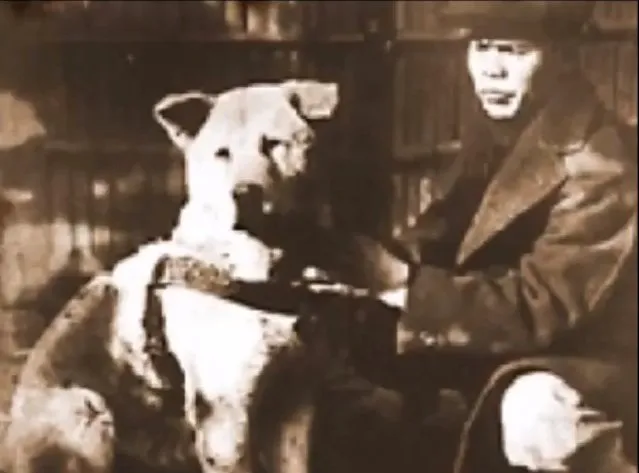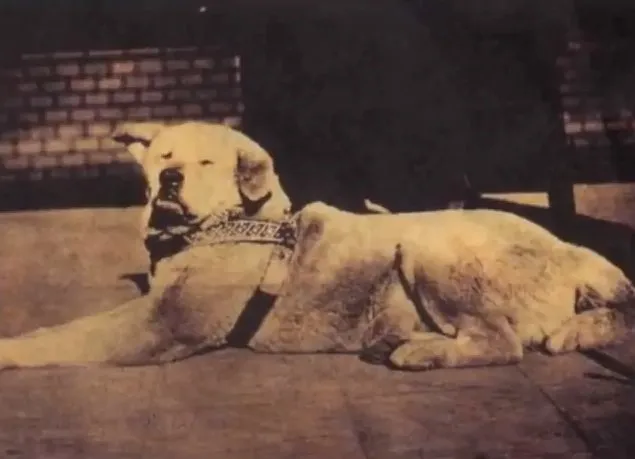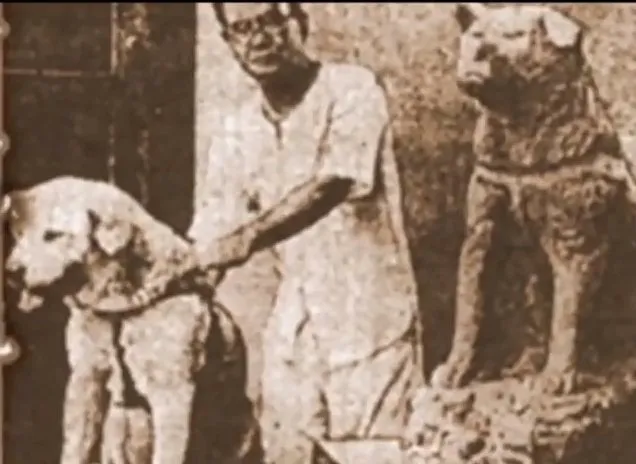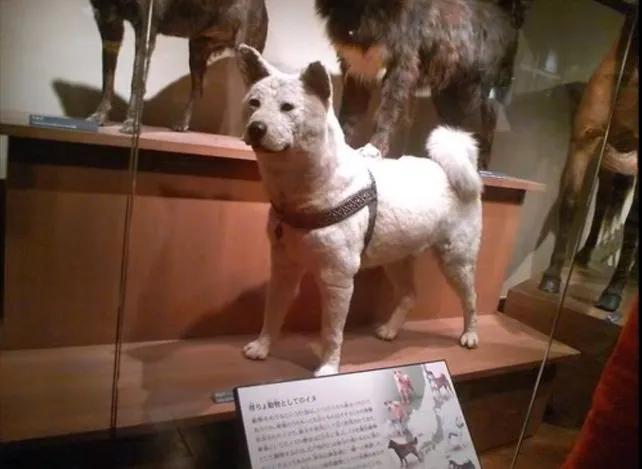The name Hachiko resonates globally as a symbol of unwavering loyalty, a bond so profound it transcends life itself. While many have been moved by the Hollywood film “Hachiko: A Dog’s Tale,” the true story of this remarkable Akita dog, whose steadfast devotion captured the heart of a nation, is even more compelling. This article delves into the genuine narrative behind the beloved movie, exploring Hachiko’s life, his enduring wait, and the powerful legacy he left behind in Japan and beyond.
Hachiko’s story isn’t just a tale for the silver screen; it’s a historical account of true friendship that began in the early 20th century in Japan. His saga serves as a timeless reminder of the extraordinary connection between humans and their canine companions, proving that the most heartwarming stories are often rooted in reality. Whether you’ve seen the movie or are just discovering Hachiko, prepare to be touched by this incredible journey of love and fidelity.
The Unbreakable Bond: Hachiko’s Early Life and Friendship with Professor Ueno
Hachiko was born on November 10, 1923, on a farm in Odate City, within Japan’s Akita prefecture. He was a purebred Akita dog, a breed renowned for its loyalty and dignified presence. His journey to Tokyo was a long and arduous 20-hour train ride. Upon arrival at the home of Hidesaburō Ueno, a professor of agriculture science at The University of Tokyo, the small puppy was in critical condition. Professor Ueno, who had long desired a purebred Akita, along with his girlfriend Yae, lovingly nursed the fragile puppy back to health over the following six months.
The professor affectionately named his new companion Hachi, meaning “eight” in Japanese, a number considered lucky in Japanese culture. Hachi and Professor Ueno quickly became inseparable, sharing an extraordinary bond that went beyond that of a pet and owner. The professor treated Hachi like his own son, and their days were filled with mutual affection. Each morning, Hachi would accompany Professor Ueno to Shibuya Train Station, seeing him off to work. In the afternoons, without fail, Hachi would return to the station, eagerly awaiting his beloved owner’s return. This daily ritual became a cherished routine, a silent testament to their deep connection.
 Hachiko and his best friend and owner, Professor Ueno
Hachiko and his best friend and owner, Professor Ueno
The Day the Waiting Began: Tragedy Strikes
Tragically, on May 21, 1925, the daily routine came to a sudden and heartbreaking halt. As Hachi sat patiently by the exit at Shibuya Station, awaiting Professor Ueno’s afternoon train, his owner never appeared. Unbeknownst to the loyal dog, Professor Ueno had suffered a cerebral hemorrhage while at work and passed away at the age of 53. Hachi, who had been with the professor for just one year and four months, was left to wait alone.
Following Professor Ueno’s death, Hachi was given a new home with Kozaburo Kobayashi, a former gardener for the Ueno family. Despite his new surroundings, Hachi’s devotion to his first master remained absolute. For the rest of his life, every single afternoon, Hachi would make his way to Shibuya Train Station. He would sit for hours, precisely at the time Professor Ueno’s train was due, patiently scanning the faces of arriving passengers, hoping to catch a glimpse of his dear friend. His wait, however, was in vain. This unwavering vigil continued for an incredible nine years, nine months, and 15 days, a true book told from dog’s perspective if ever there was one.
Initially, Hachi’s persistent presence at the station was not always met with kindness. There are accounts of him being mistreated and bullied by some pedestrians, station staff, and even children. His loyalty was misunderstood by many, but that changed dramatically when his story reached a wider audience.
 Hachiko waiting at Shibuya Train Station
Hachiko waiting at Shibuya Train Station
From Local Dog to National Hero: Hachiko’s Fame
Hachiko’s plight might have remained a local anecdote had it not been for a reporter from a major Japanese newspaper. In 1932, the journalist stumbled upon Hachi’s incredible story and published it, propelling the faithful dog into national celebrity. The article ignited a wave of sympathy and admiration across Japan, and people began to call him “Chuken-Hachiko,” meaning “Hachiko – the faithful dog.”
This national recognition transformed Hachiko’s life. People from all over Japan started visiting Shibuya Station to offer him treats and express their respect. He became a living symbol of love, devotion, and loyalty, inspiring countless individuals. Hachiko continued his daily routine of waiting at the station until his own death on March 8, 1935, at the age of 11. He passed away peacefully and alone on a street near Shibuya Station. His story remains a powerful testament to the extraordinary emotional depth of animals and their capacity for love, echoing themes found in profound literary works like Kafka’s literary work on dogs.
Hachiko’s Legacy: Statues, Museums, and Memorials
Hachiko’s enduring legacy is commemorated in numerous ways throughout Japan, particularly in Tokyo and his birthplace. These memorials ensure that his remarkable story continues to inspire new generations.
The most famous and frequently visited tribute is the Hachiko Statue at Shibuya Station. Erected in 1934 by artist Teru Andō, with Hachiko himself present at the unveiling, it stands as a prominent landmark and a popular meeting point. The original statue was melted down for metal during World War II, but a new one, crafted by Andō’s son, Takeshi Ando, was erected in 1948. Today, the station’s prominent exit is even named “Hachikō-guchi,” or “The Hachikō Entrance/Exit.”
 The famous Hachiko bronze statue in Shibuya
The famous Hachiko bronze statue in Shibuya
Every year on March 8th, the anniversary of Hachiko’s death, an annual memorial ceremony is held at Shibuya Station, honoring his loyalty and devotion. In 2023, a particularly large ceremony marked what would have been Hachiko’s 100th birthday. Inside Shibuya Station, a stunning Hachiko Mosaic titled “Hachiko Family” adorns a wall, depicting Hachiko playing happily with his parents and siblings. Created by Ryutaro Kitahara in March 1990, it adds another artistic dimension to his legacy.
For those wanting to encounter Hachiko’s physical presence, his preserved body is on display at the National Museum of Nature and Science in Ueno, Tokyo. After his death, Hachiko was stuffed and preserved, allowing visitors to see the faithful dog himself. It’s a somber yet moving experience, offering a tangible connection to the legend.
 Hachiko's preserved body at the National Museum of Nature and Science
Hachiko's preserved body at the National Museum of Nature and Science
Another deeply moving tribute is the Hachiko & Professor Ueno Statue at the University of Tokyo. This beautiful bronze sculpture, unveiled on March 9, 2015, depicts a joyful reunion between Hachiko and his beloved owner, Professor Ueno, under a large tree. It symbolizes their bond at the place where Professor Ueno worked. A small museum next to the statue displays articles, photos, Hachiko’s autopsy report, and even some of his preserved organs, revealing that he died of terminal cancer and a filaria infection, not the four yakitori skewers found in his stomach.
Finally, Hachiko’s ashes are interred beside Professor Ueno’s grave, with a Hachiko Monument marking his resting place in Aoyama Cemetery in Minato, Tokyo. This final resting place symbolizes their eternal bond. Furthermore, in Odate City, Hachiko’s birthplace, the Akita Hachiko Dog Museum celebrates the Akita breed and its most famous representative. Visitors can learn about Akita dogs and even interact with them on weekdays. Odate City itself is a tribute, filled with Akita dog statues, including one at Odate Station, and Hachiko-themed symbols everywhere.
“Hachiko: A Dog’s Tale” and Other Adaptations
Hachiko’s poignant story has transcended borders and mediums, reaching global audiences through various adaptations. The first major cinematic portrayal was the 1987 Japanese film, “Hachiko Monogatari,” which brought his story to life for a domestic audience. However, it was the 2009 Hollywood production, “Hachiko: A Dog’s Tale,” starring Richard Gere, that truly immortalized the “Hachiko Dog Movie True Story” for millions worldwide.
The American adaptation, filmed in Rhode Island, USA, faithfully recreated the essence of Hachiko’s devotion, albeit with a change in setting. The movie beautifully captured the enduring bond between Professor Parker Wilson (Richard Gere) and Hachi, depicting the dog’s daily trips to the train station and his decade-long wait. The film is renowned for its emotional depth, often leaving viewers in tears, and further solidified Hachiko’s status as a global icon of loyalty. A statue of Hachi also stands in Woonsocket Depot Square, Rhode Island, at the fictional “Bedridge” train station featured in the movie, mirroring the original Shibuya monument. Beyond the big screen, several books about Hachiko have been published, delving deeper into his life and the profound impact of his story. These literary works offer further insights into the legend, allowing readers to explore the narrative in greater detail.
Conclusion
The true story of Hachiko, the Akita dog, is more than just a historical account; it is a timeless parable of unwavering loyalty, deep affection, and extraordinary devotion. From his daily greetings with Professor Ueno to his solitary, decade-long vigil at Shibuya Station, Hachiko embodied the profound connection possible between humans and animals. His legacy, reinforced by the powerful “Hachiko: A Dog’s Tale” movie and numerous memorials across Japan, continues to inspire and remind us of the simple yet profound power of love and fidelity.
Hachiko’s story encourages us to reflect on the meaning of companionship and the incredible capacity for loyalty that dogs possess. His legend serves as a poignant reminder that true friendship knows no bounds, even those of life and death. The next time you see a faithful dog, or remember the tears shed watching his movie, take a moment to appreciate the true story of Hachiko, a dog whose heart truly waited a lifetime.
